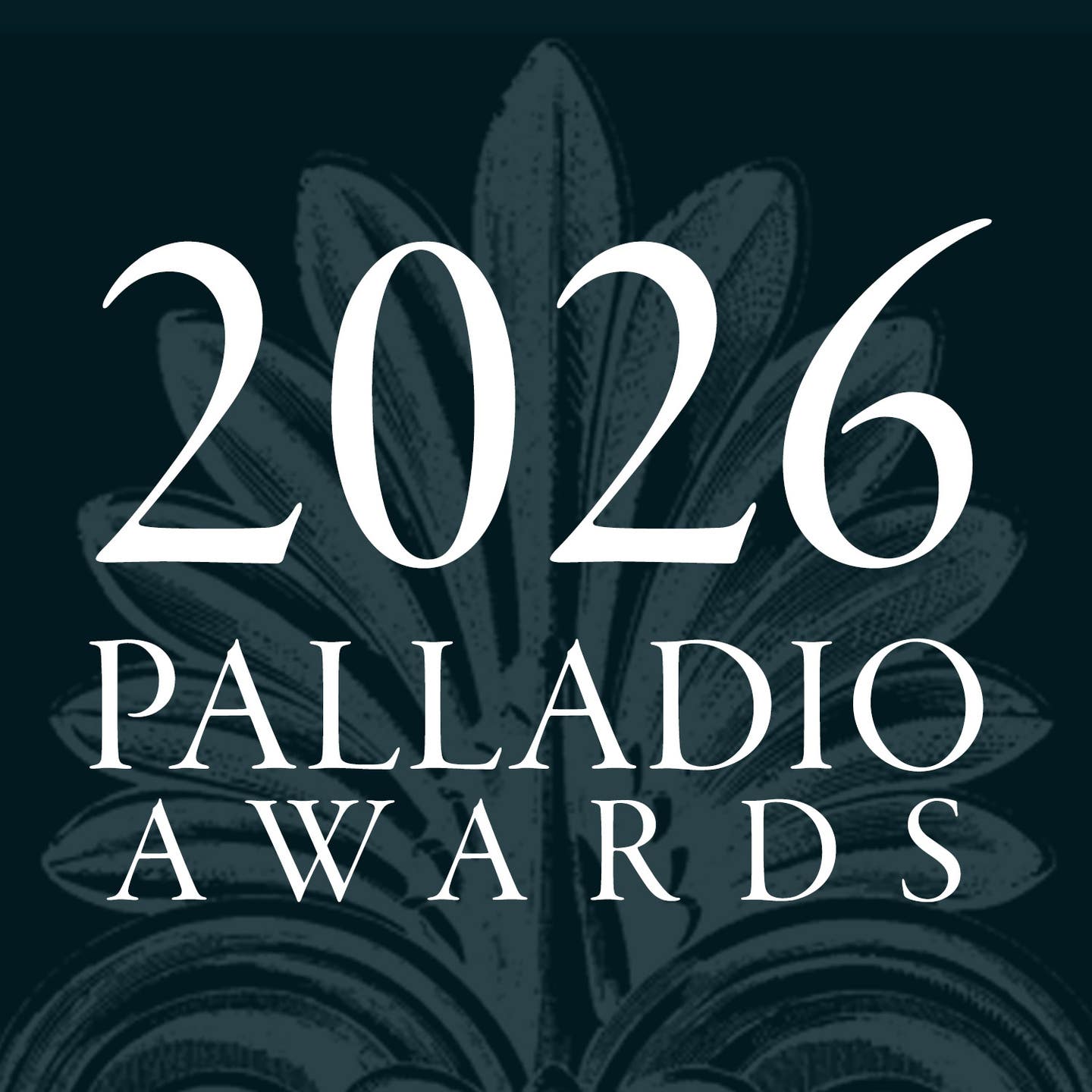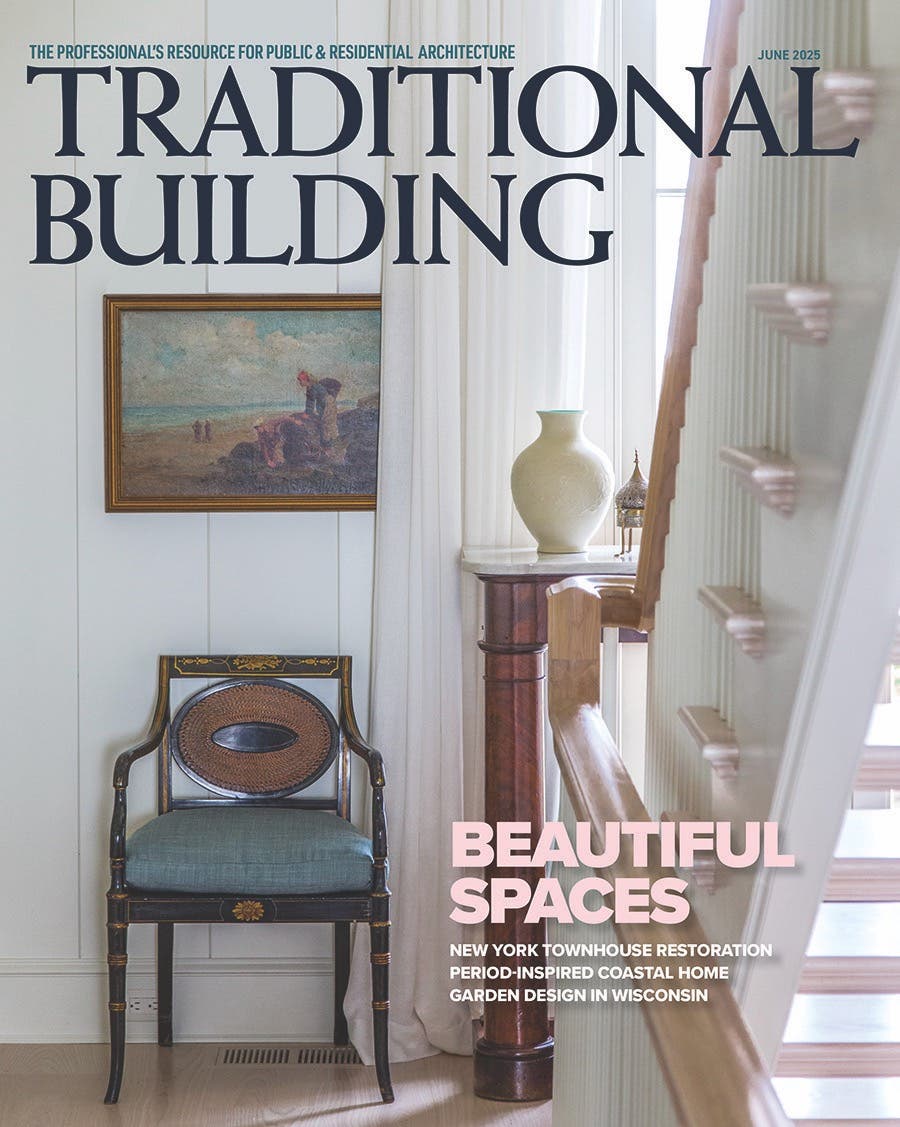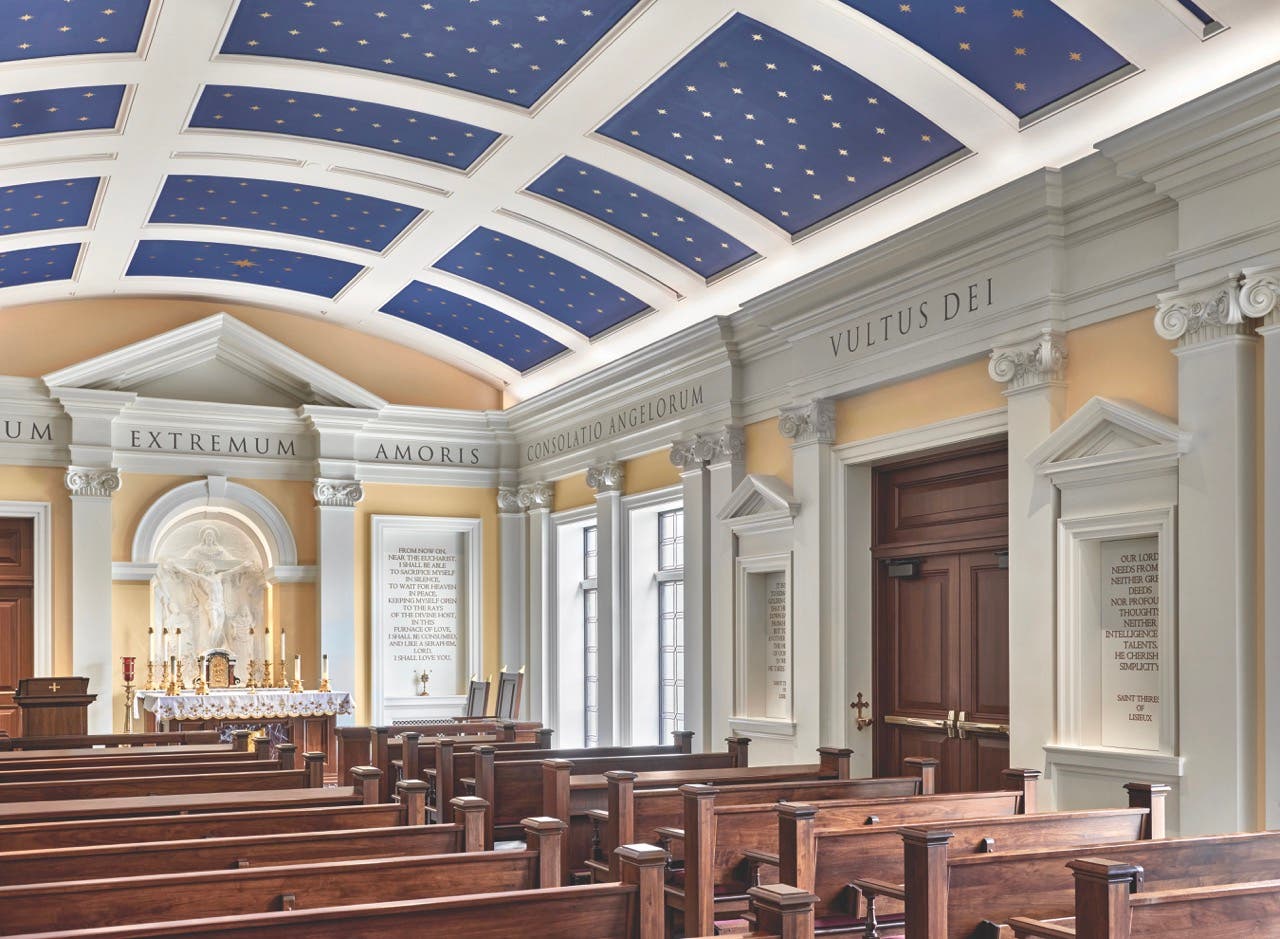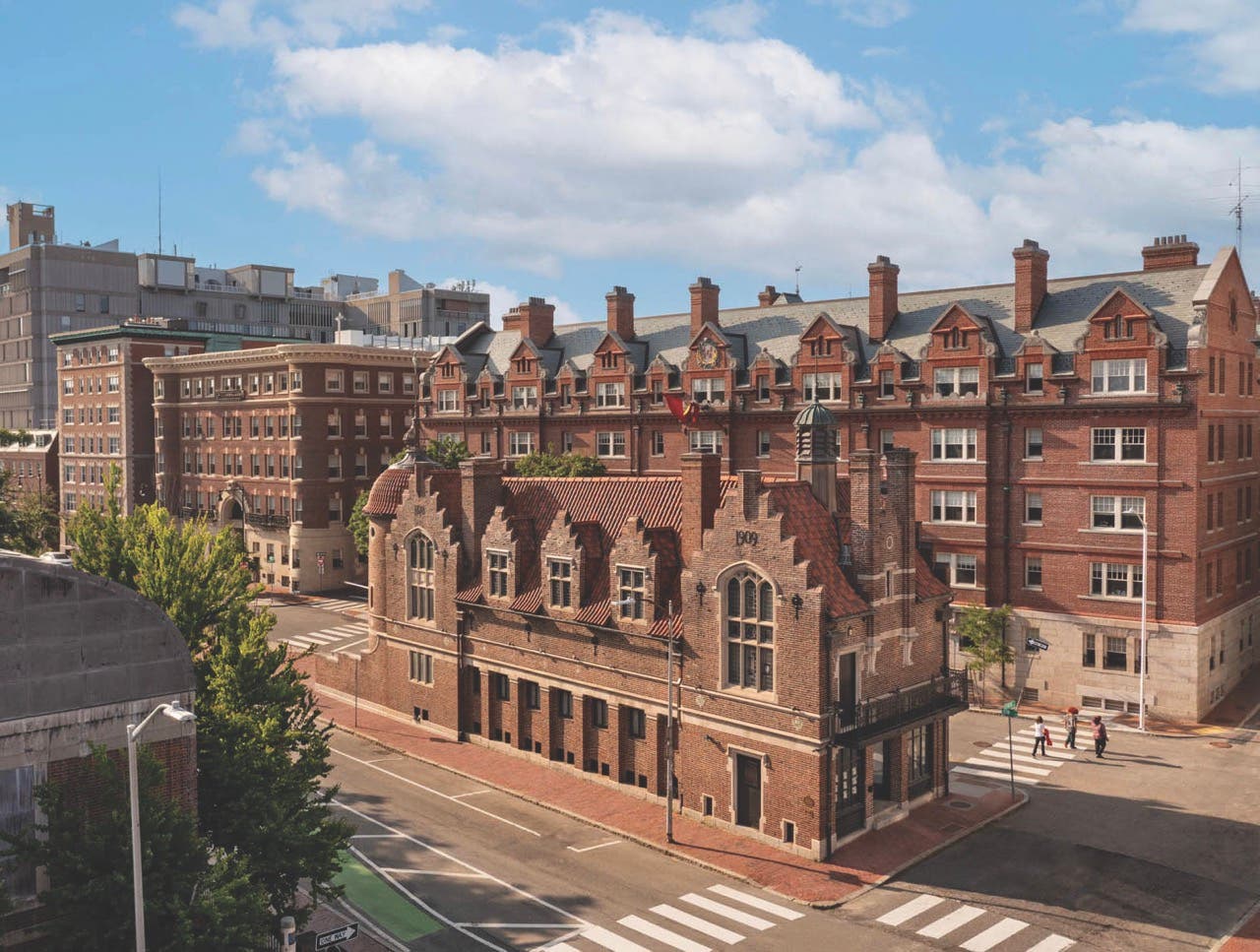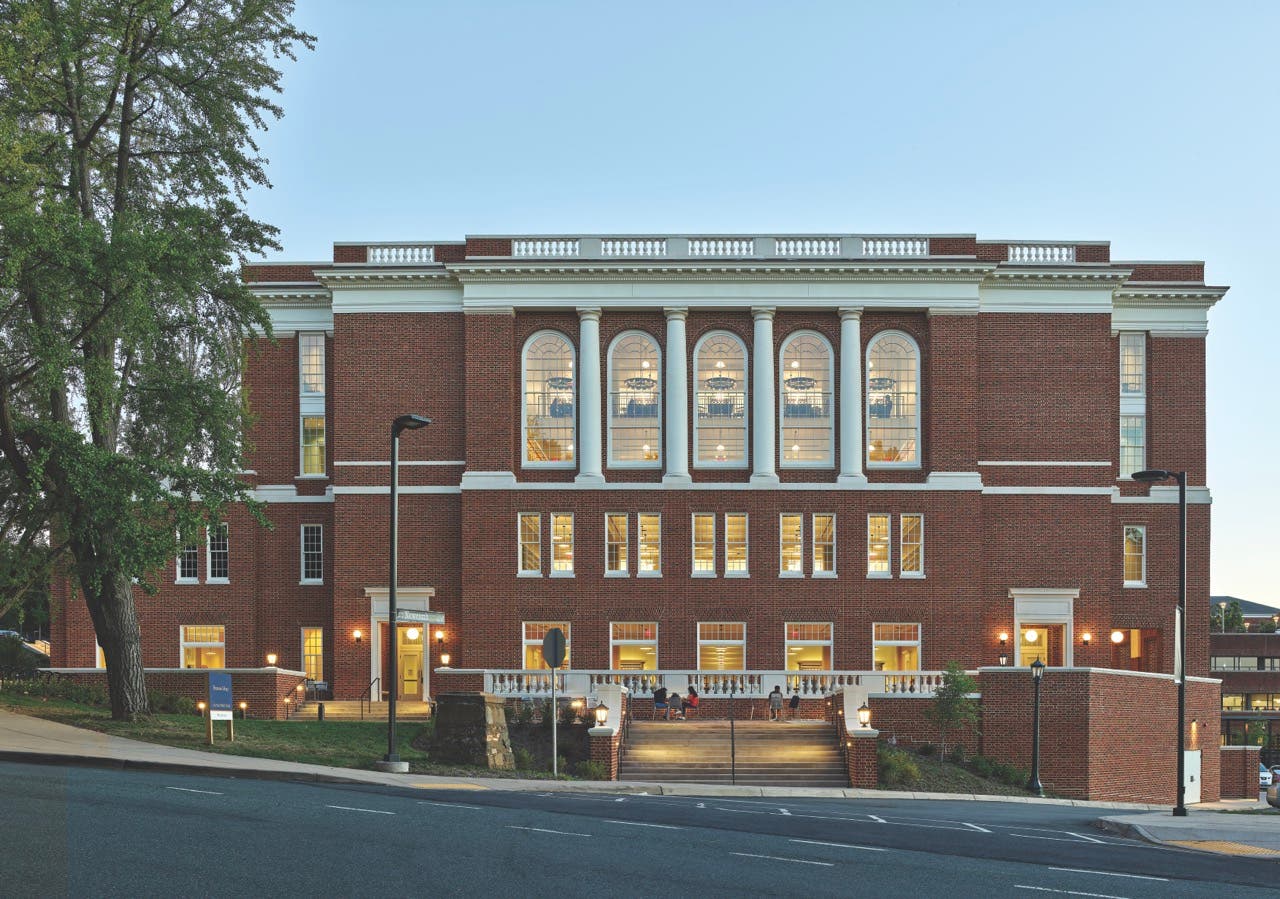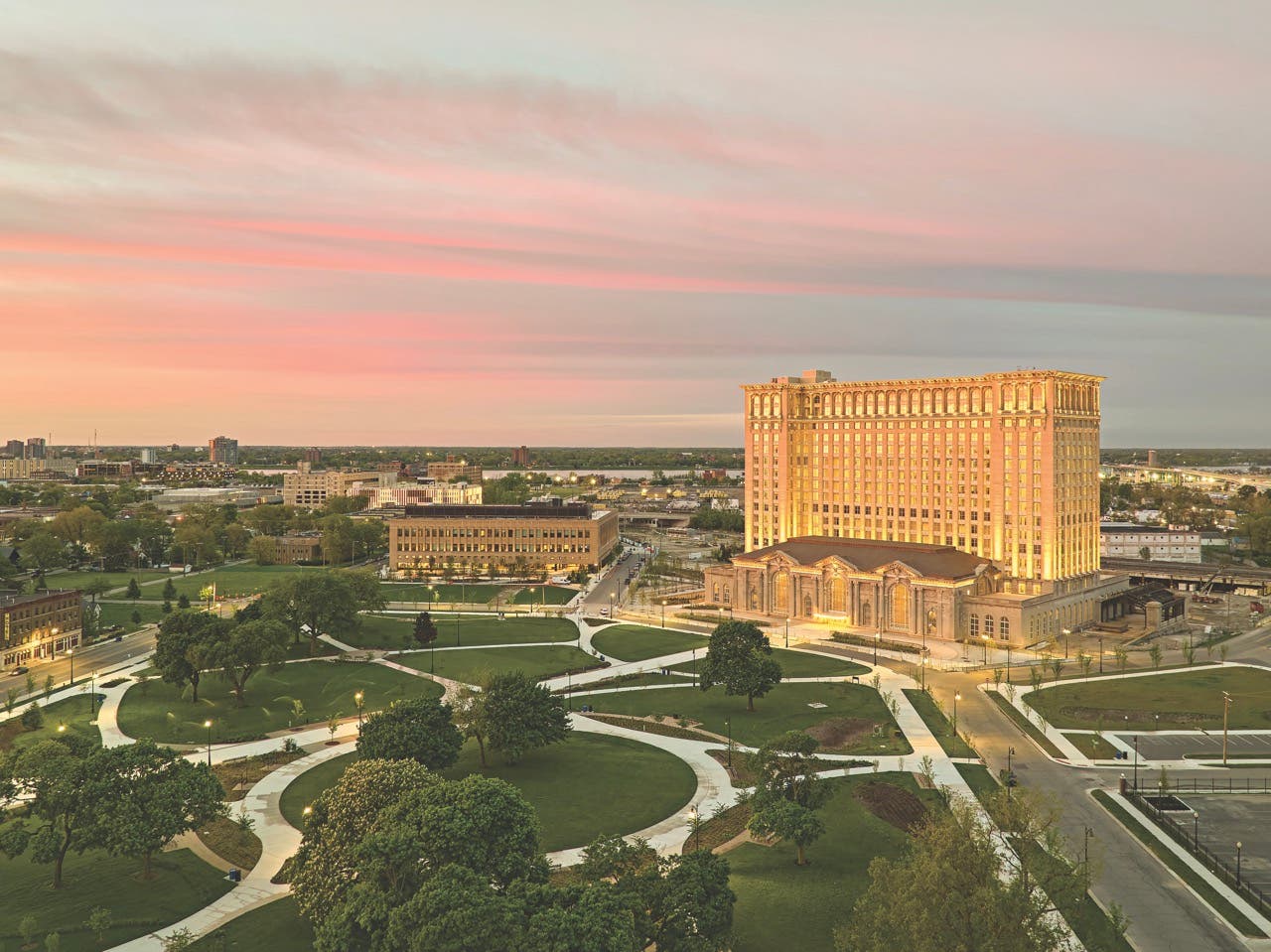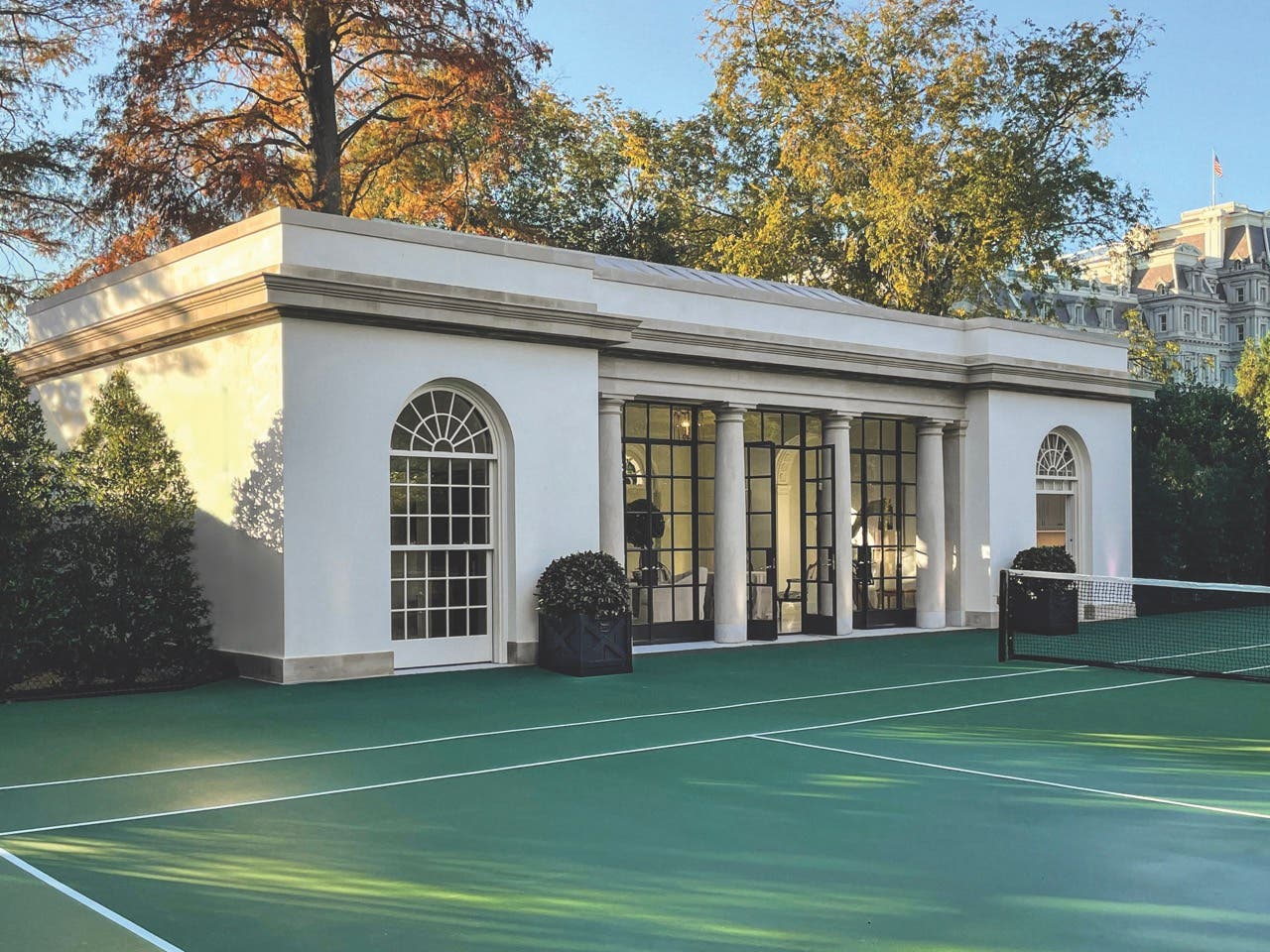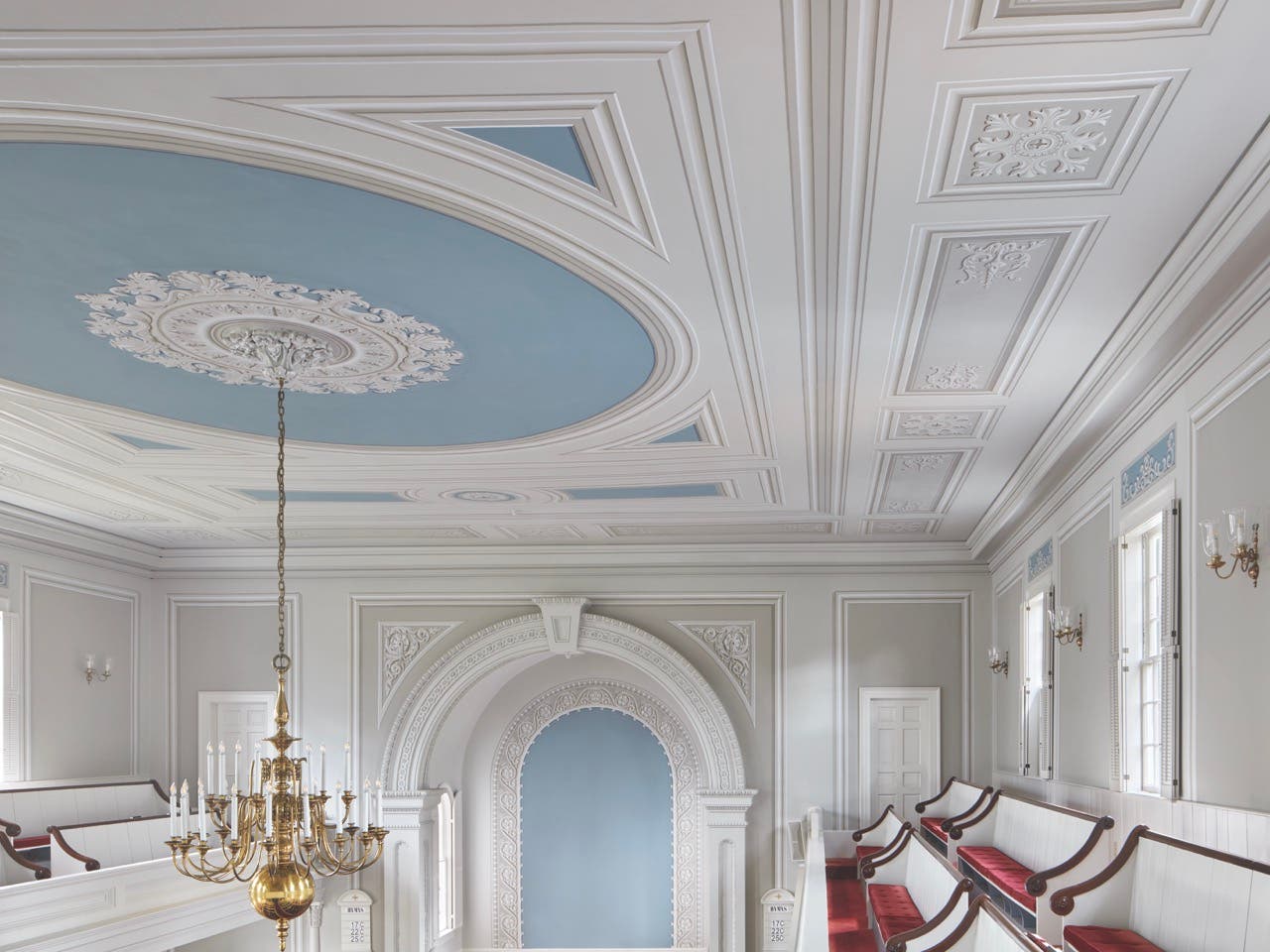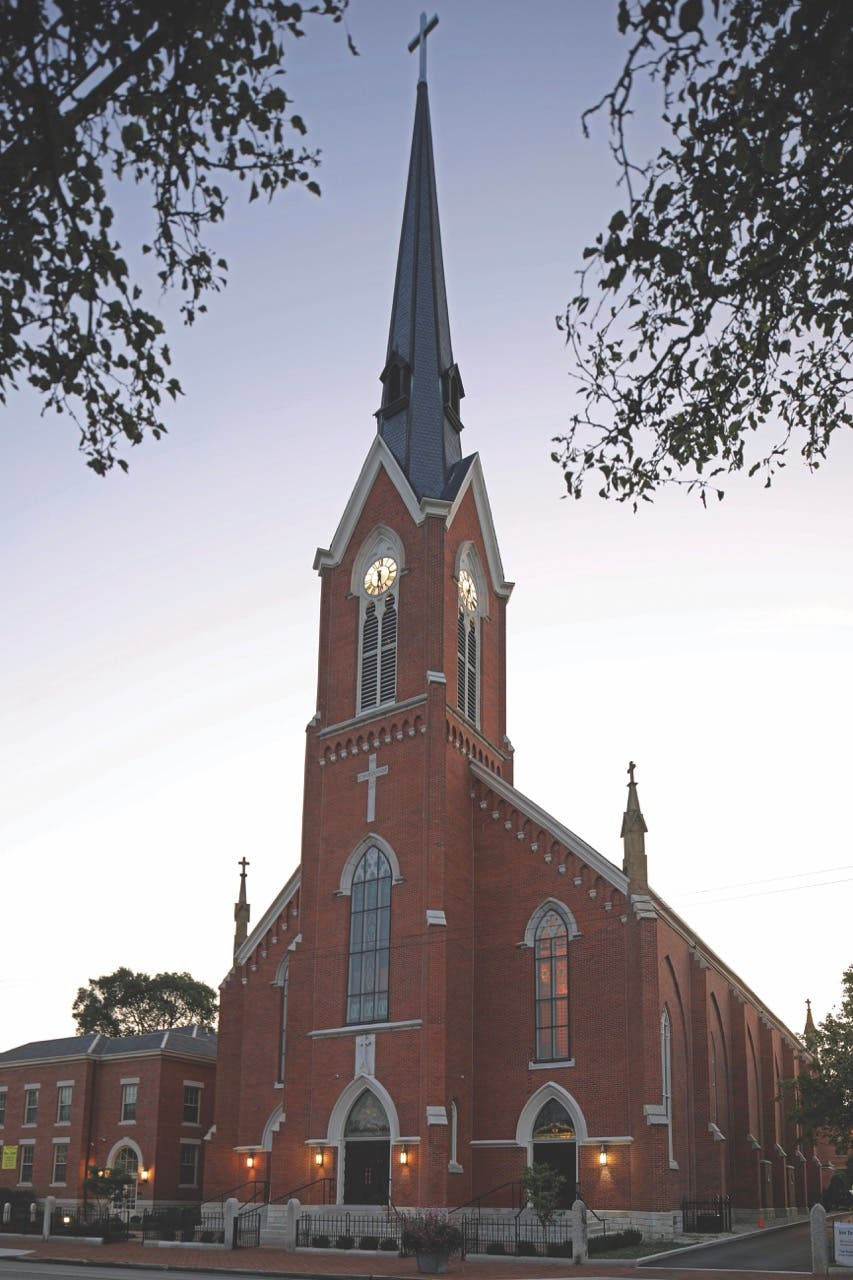
Palladio Awards 2025
St. Mary Catholic Church – Moody Nolan
It was a lightning strike—some would call it a divine sign from the Almighty—that saved St. Mary Catholic Church in the historic German Village neighborhood of Columbus, Ohio, and gave it new life.
The bolt from above illuminated such significant structural damage to the Gothic Revival church, which was completed in 1868 and is on the National Register of Historic Places, that there was even talk of tearing down the building.
“It’s the tallest structure in the village, and people of all religions look to it as a symbol of the village,” says David B. Meleca, FAIA, partner and director of classical architecture at Moody Nolan. “But the parishioners paid for the project—it took them a year to raise the money, and we were hired to bring it back to its original real luster.”
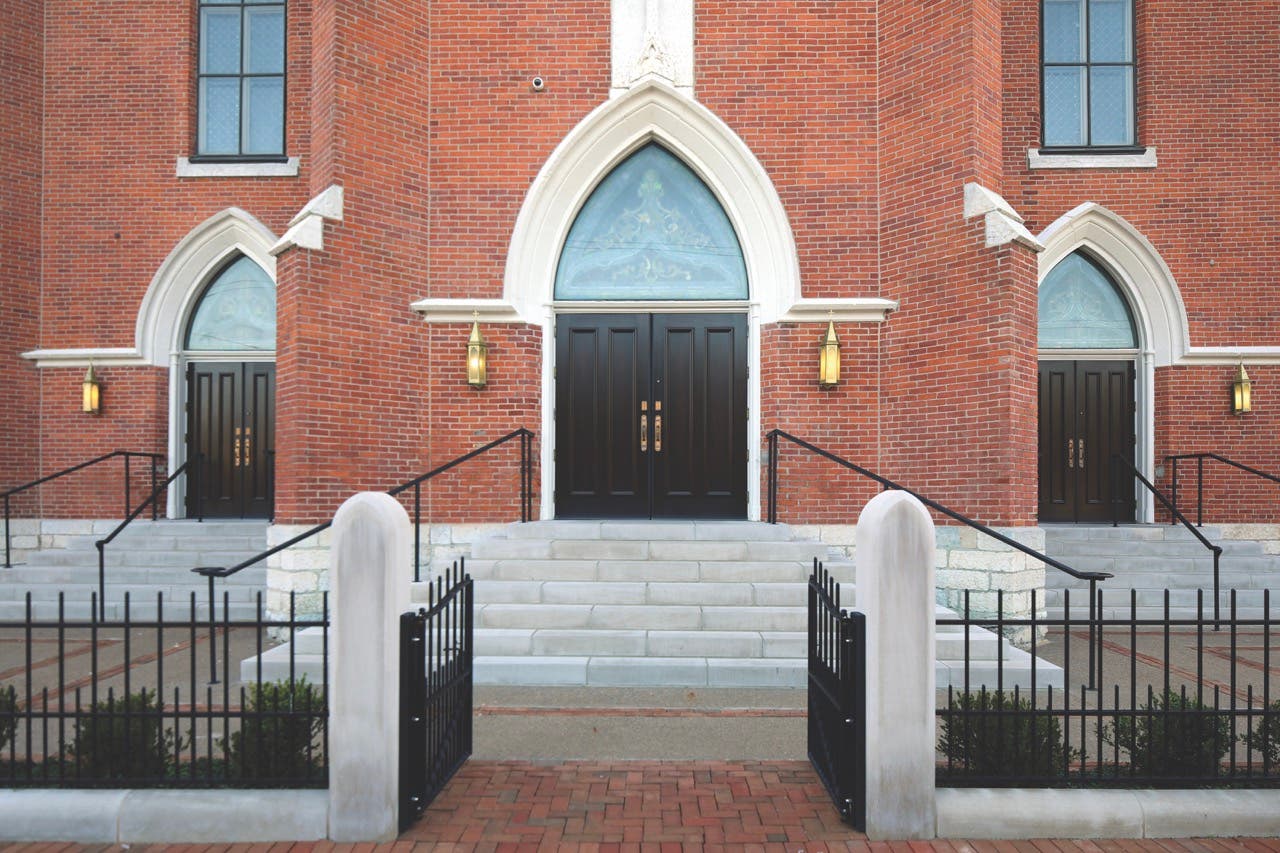
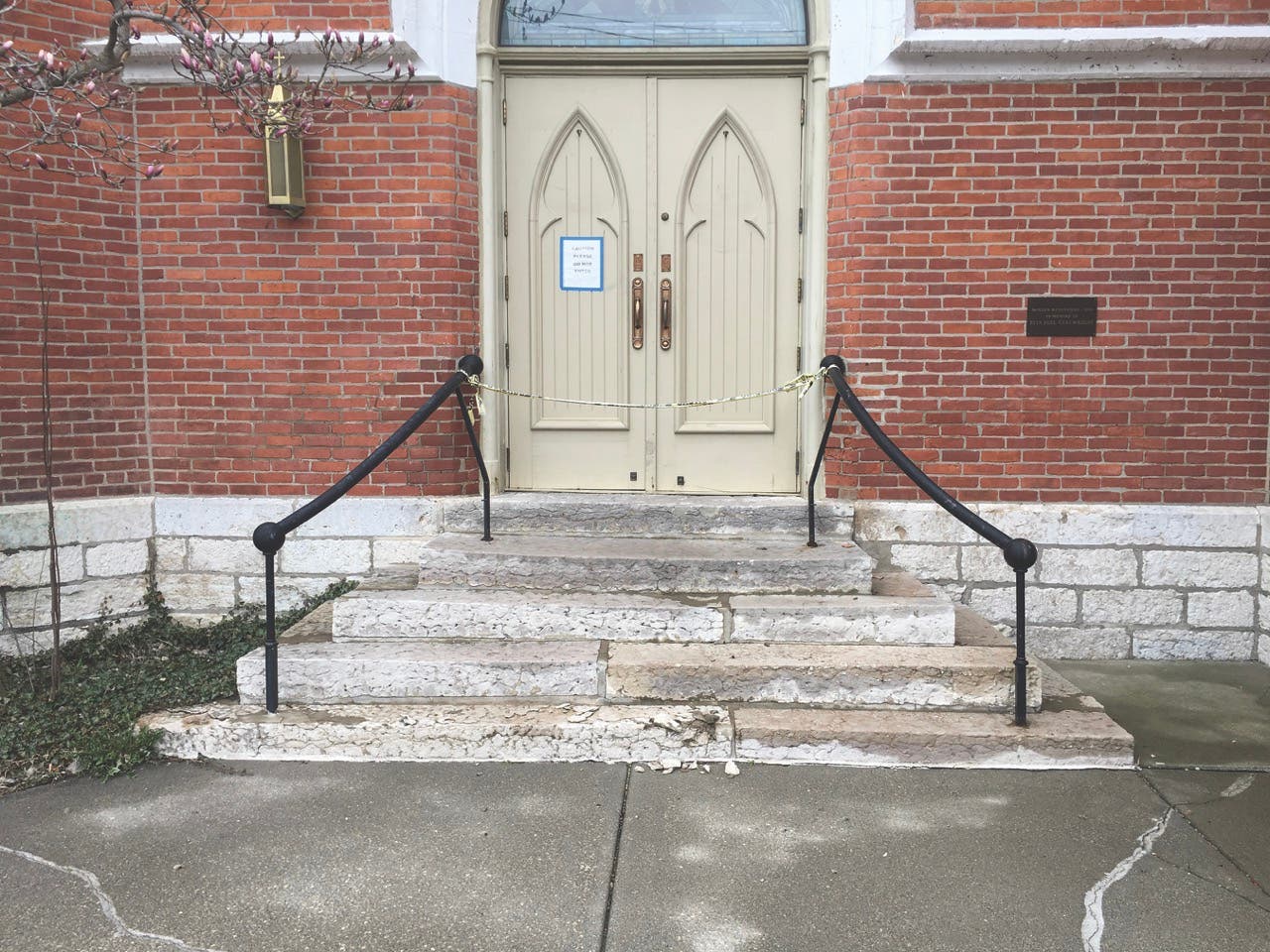
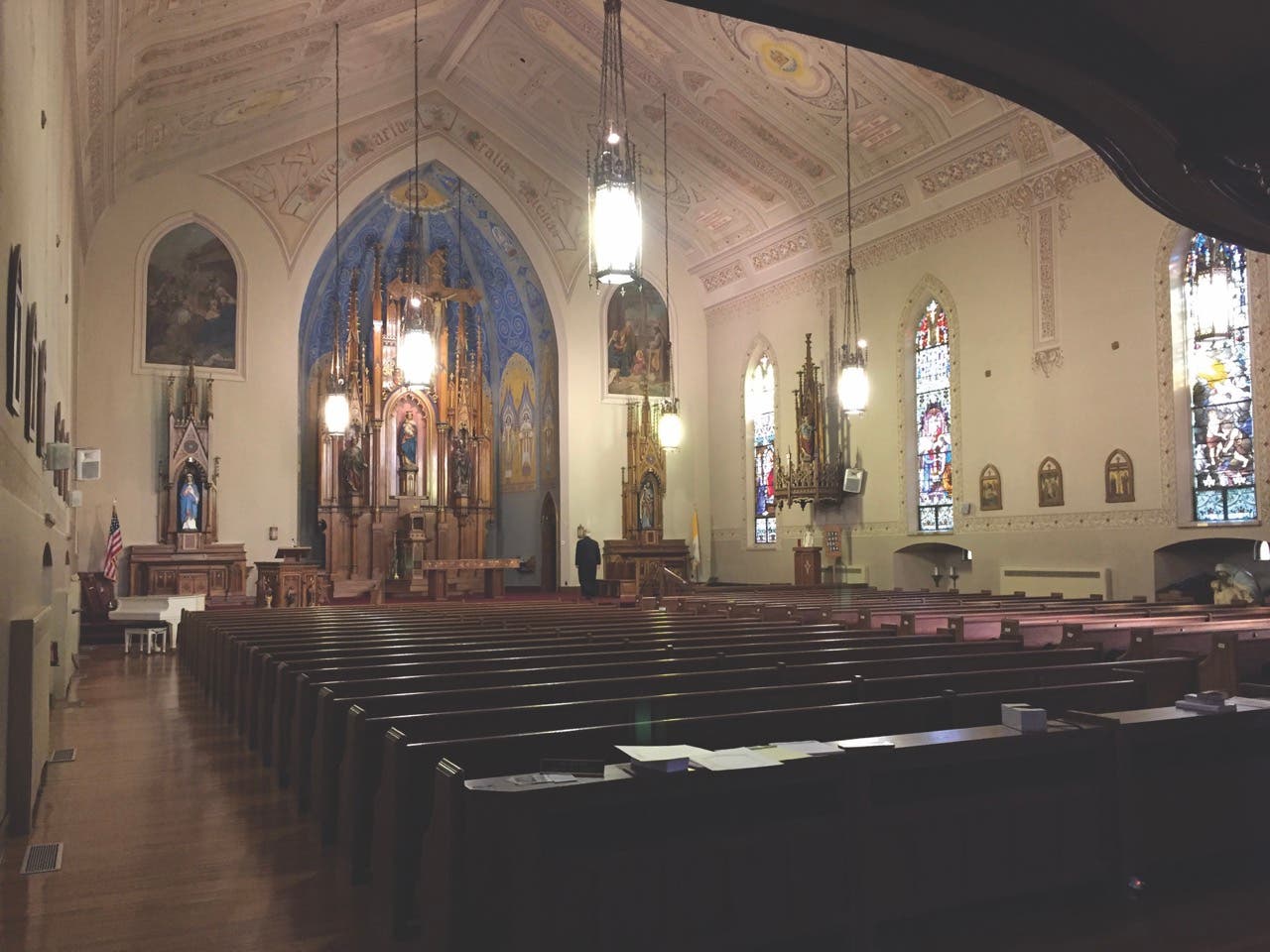
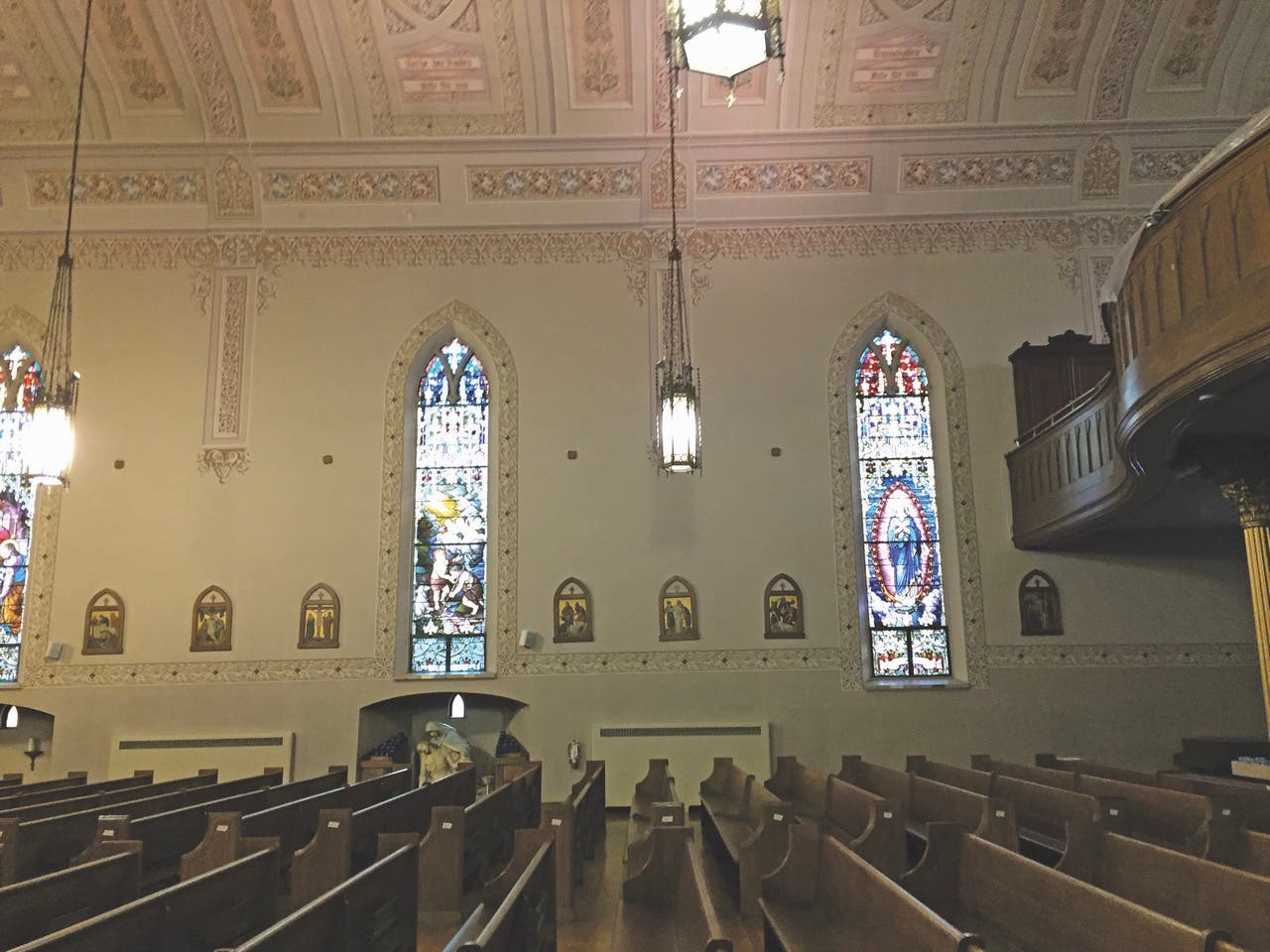
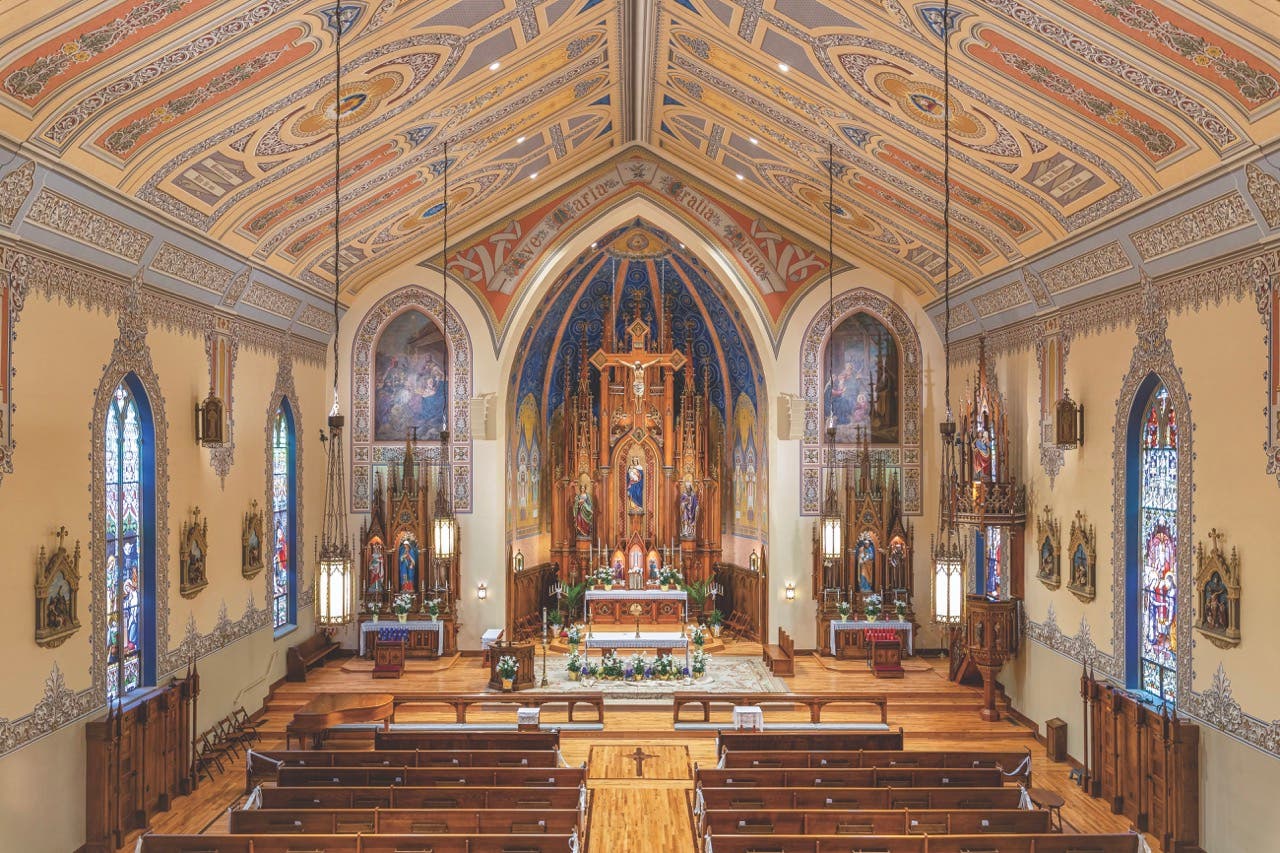
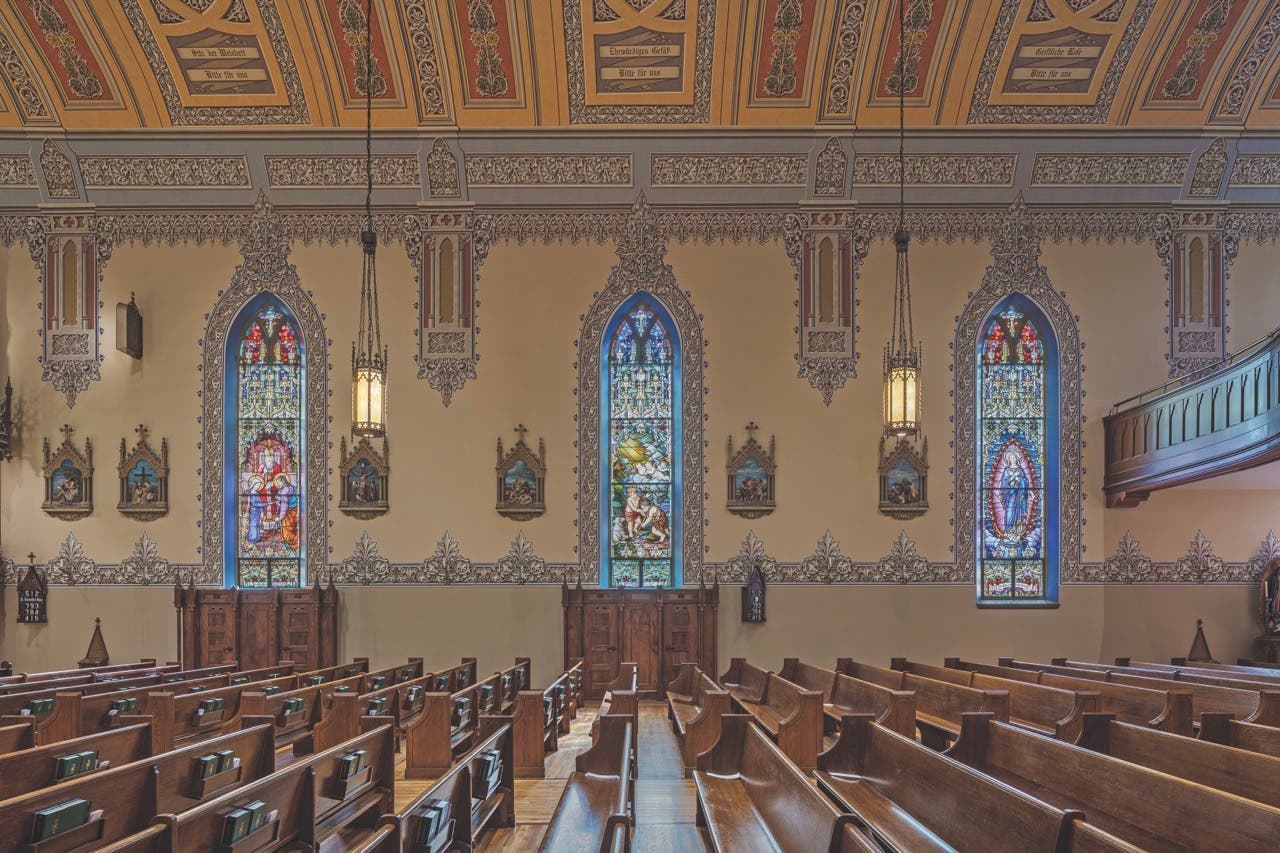
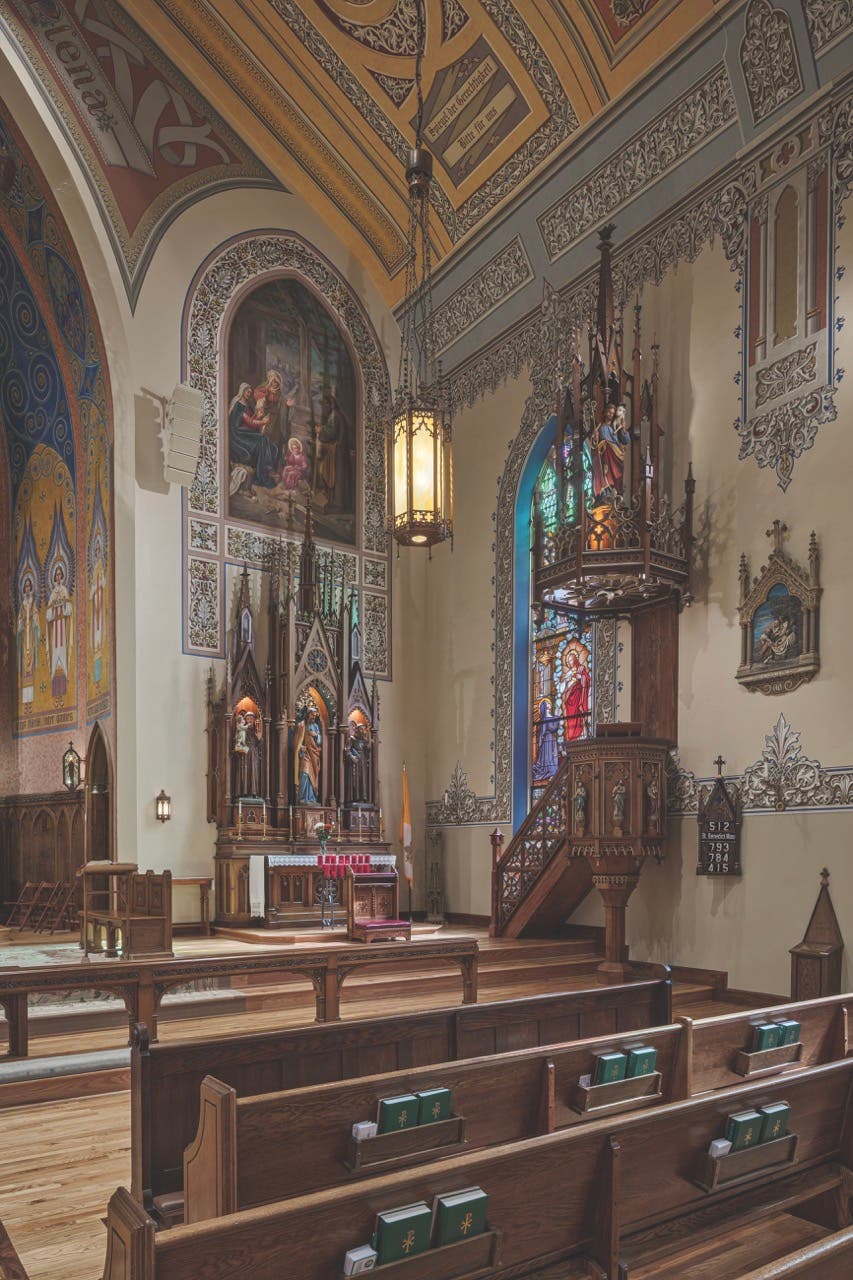
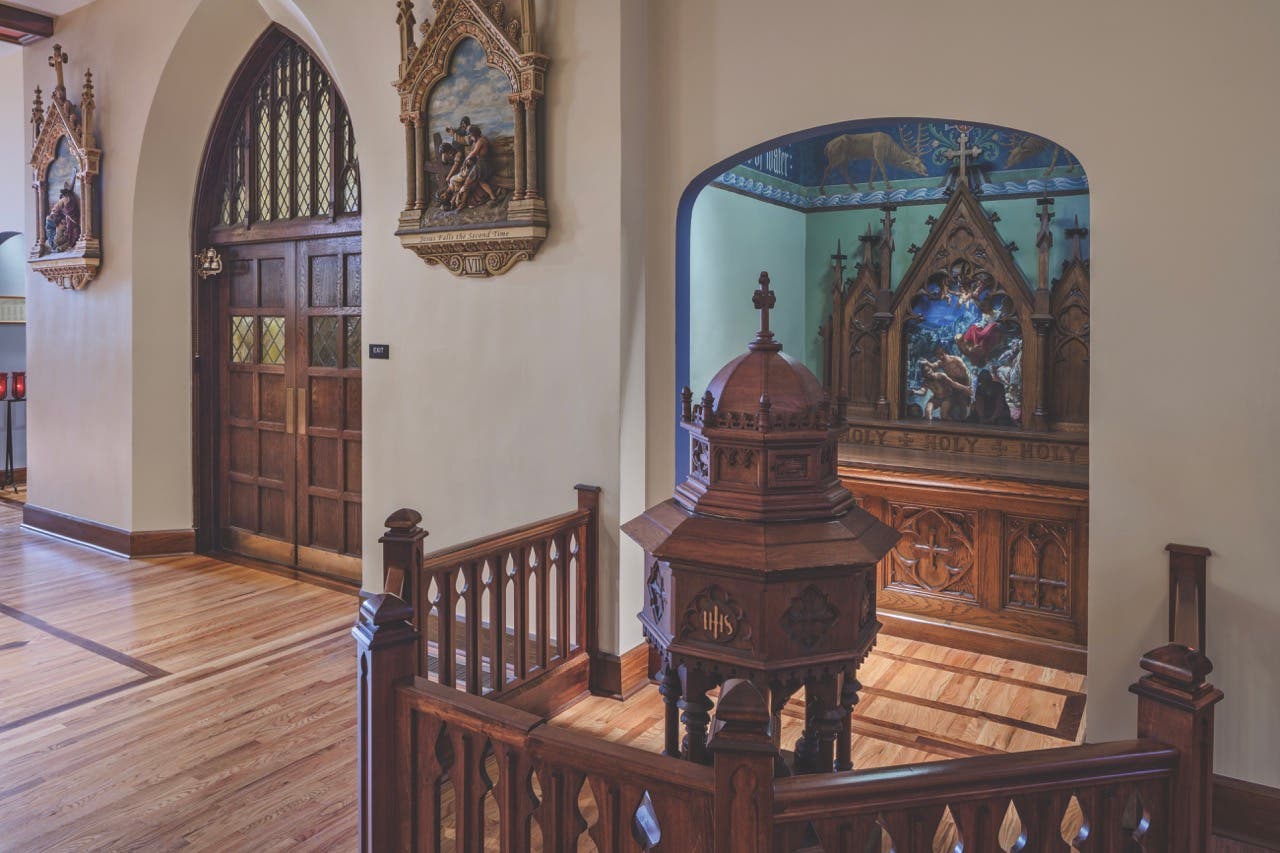
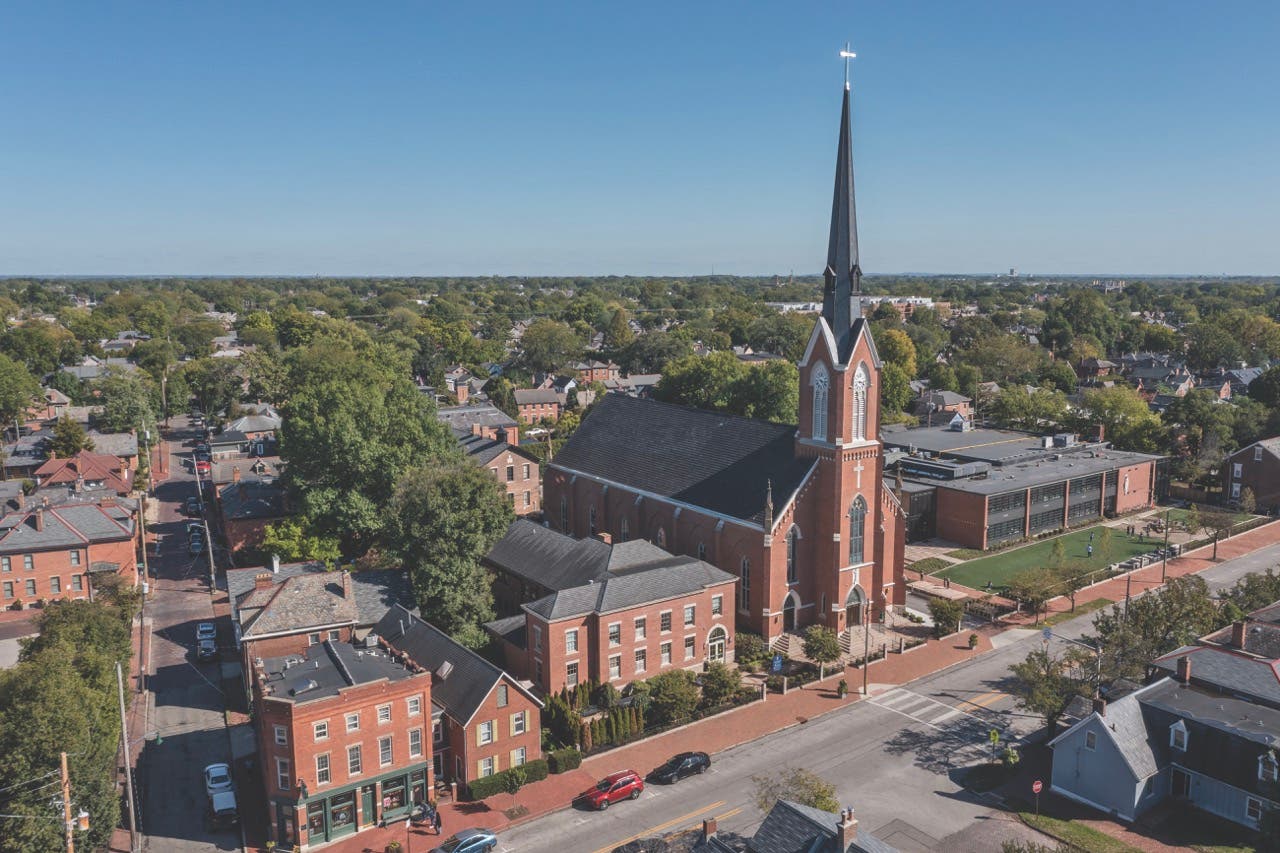
Engineers’ reports revealed that St. Mary’s original heavy timber truss system and exterior load-bearing masonry walls, strained through the decades, were in danger of collapsing, and for fear it might do so, the church was forced to close while plans for the restoration were put into place.
Moody Nolan installed a new timber truss system that’s attached to a series of new embedded steel columns, which, Meleca says, “is completely invisible to visitors.”
Moody Nolan also restored its 197-foot-high bell tower, adding new exterior trim and louvers under its clock and replacing its shingle roof with synthetic clay tiles that maintain its historical appearance without overloading the roof trusses.
For the interior work, St. Mary’s first comprehensive renovation and restoration, Moody Nolan focused on correcting previous interventions that were not historically sensitive.
The sanctuary was returned to its original orientation, the mammoth pipe organ was upgraded, and light fixtures were restored. The original ambo, whose pieces were discovered in the church’s crawl space, was repaired and reinstalled with a new set of stairs.
Working with EverGreene Architectural Arts, Moody Nolan revived the intricate paintings along the nave’s ceiling and walls.
“The ceiling, which we had to remove to make the structural repairs, had been repainted in the 1980s,” Meleca says, adding that three different color schemes were discovered through analysis. “We decided to take the middle ground and combined a couple of things to bring back the bright colors of the 19th century.”
EverGreene Architectural Arts stenciled the existing designs and created digital versions that allowed its artists to adjust the colors and refine the designs to create a subtle 3D effect.
After the final color scheme was approved by the parish, the graphics were printed, like wallpaper, on 5-foot by 36-foot canvas sheets.
Five-person teams, standing on a scaffold-supported platform 35 feet above the nave floor and using additional rolling scaffolding to reach the peak of the sloped ceiling, installed the panels, a process that took six months.
Instead of hand-painting the spaces, the use of canvas panels saved the team time and money, essential given the artwork alone took 17 months to complete.
Another key part of the project was restoring the liturgical art, much of which had been removed and substantially altered over time.
In the 19th century, the church’s sanctuary was adorned with murals by Gerhard Lamers. A 20th-century repainting, however, had stripped them of their detail and muted their distinctive, bold colors.
The Moody Nolan team conducted extensive research, including studying historic photographs, to recreate the original colors and stencil design.
New wooden entry doors, limestone steps, sidewalks, and metal fencing create an entry sequence that re-establishes St. Mary’s presence in the community.
In addition, a new prayer garden with benches at the front entrance offers a peaceful space for reflection and prayer, inviting all who pass by to pause and connect.
“The community is more engaged with St. Mary’s than ever before,” says Meleca, adding that since the reopening in 2019, the congregation has grown from 355 members to more than 1,000.
“There’s a huge sense of pride about the church,” he says. “People still stop me in the street to say thank you for the work that we did.” TB
| Key Suppliers |
|---|
| Architect Moody Nolan Decorative Painting Lead EverGreene Architectural Arts Local Painting Subcontractor Martin Painting Lighting Restoration Rambusch Lighting Stained-Glass Window Restoration Franklin Art Glass Exterior Front Steps and Stonework Lang Stone Millwork, General Contractor Corna Kokosing (CK Construction) Structural Engineering Kabil Associates |

